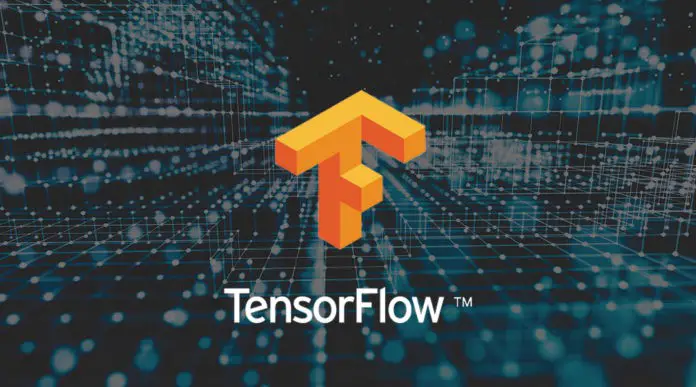Google created the open-source TensorFlow library, which is largely used for deep learning applications. It supports traditional human-made intelligence. TensorFlow was initially developed for monstrous numerical calculations without deep learning as a primary concern. Regardless, it has proven to be crucial to the development of deep learning, thus Google has made it publicly available.
TensorFlow accepts data as multi-layered high-dimensional objects called tensors. Multi-level groups are extremely helpful for working with large amounts of data.
TensorFlow works in light of information stream diagrams that have center points and edges. Since the execution framework is diagram-like, it is much easier to run TensorFlow code on many computers when using GPUs.
Send flowers online! Award-winning online florist offering same day and next day flower delivery in the USA and Canada Order fresh flowers and plants, roses and bouquets, or gift baskets for nationwide delivery by top local florists Satisfaction guaranteed, and free virtual gifts, too
History of TensorFlow
TensorFlow was first unveiled in 2015, while the major stable version appeared on February 11, 2017. It is created and maintained by Google in that respect, it has become one of the most famous frameworks for deep learning and AI projects. It has a huge library for AI and huge scope of mathematical calculations. Here are some more milestones for TensorFlow:
- In December 2017, Kubeflow was released for the operation and deployment of TensorFlow on Kubernetes.
- In March 2018, TensorFlow 1.0 was released for machine learning in JavaScript.
- In January 2019, TensorFlow 2.0 was released which adds many features to TensorFlow.
- In May 2019, TensorFlow Graphics was released for deep learning in computer graphics.
Why TensorFlow?
TensorFlow offers both C++ and Python APIs
Before the development of libraries, coding systems for AI and deep learning were significantly more confusing. This library provides an abstract-level API and complex coding is not expected to set up a brain network, design a neuron or program a neuron. The library completes these tasks. TensorFlow is similarly integrated with Java and R.
TensorFlow backings both CPU and GPU processing gadgets
Deep learning applications are exceptionally complex, requiring a ton of computation to prepare interactions. It requires a long investment due to the huge data size, and it includes several iteration cycles, numerical calculations, mesh attributes, and more. If you play these exercises on a normal central processing unit (CPU), it usually takes significantly longer.
Graphical processing units (GPUs) are well-known in games, where you really want the screen and image to be a high target. GPUs were originally intended for this reason. Nevertheless, they are also being used to develop deep-learning applications
One of the notable advantages of TensorFlow is that it supports GPUs, as well as CPUs It also has faster compilation times compared to other deep learning libraries like Keras and Lite.
Send flowers online! Award-winning online florist offering same day and next day flower delivery in the USA and Canada Order fresh flowers and plants, roses and bouquets, or gift baskets for nationwide delivery by top local florists Satisfaction guaranteed, and free virtual gifts, too
How TensorFlow Works?
TensorFlow allows you to make dataflow graphs that portray how data travels through a graph. The graph comprises hubs that address a numerical activity. An association or edge between hubs is a multidimensional data cluster. It accepts inputs as a multi-layered exhibit where you can develop a flowchart of tasks that can be performed on these sources of info.
TensorFlow Architecture
Tensorflow architecture works in three significant steps:
- Data pre-processing – structure the data and bring it under one limiting value
- Building the model – build the model for the data
- Training and estimating the model – use the data to train the model and test it with unknown data
Where Can Tensorflow Run?
TensorFlow prerequisites can be classified into the development phase (preparing the model) and the run phase (running the model on various stages). The model can be prepared and utilized on GPUs as well as CPUs. Once the model has been trained, you can run it on:
- Desktop (Linux, Windows, macOS)
- Mobile devices (iOS and Android)
- Cloud as a web service
Send flowers online! Award-winning online florist offering same day and next day flower delivery in the USA and Canada Order fresh flowers and plants, roses and bouquets, or gift baskets for nationwide delivery by top local florists Satisfaction guaranteed, and free virtual gifts, too
Conclusion
TensorFlow improves the execution of AI and deep learning models. While programming in TensorFlow is only a small part of the mind-boggling universe of deep learning, you should consider expanding your insights by signing up for our computer-based intelligence and AI courses. This course will take you on a journey through deep learning concepts, implementing deep learning algorithms, building brain networks, and more.
Important Affiliate Disclosure
We at projectventive.com are esteemed to be a major affiliate for some of these products. Therefore, if you click any of these product links to buy a subscription, we earn a commission. However, you do not pay a higher amount for this. Rest easy as the information provided here is accurate and dependable.


